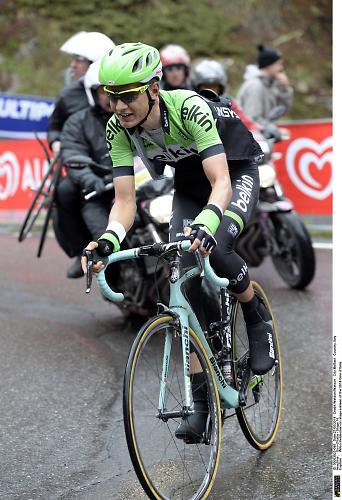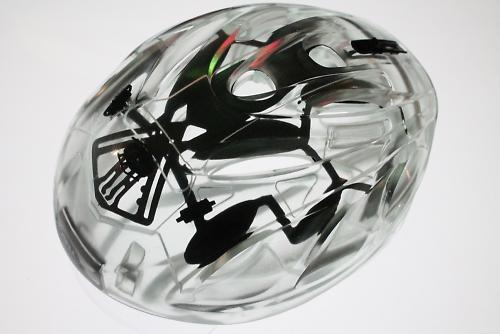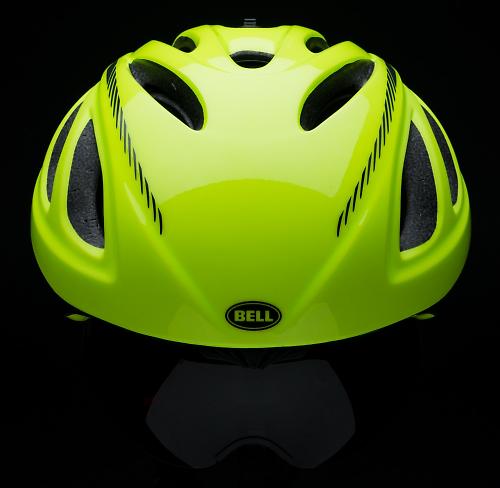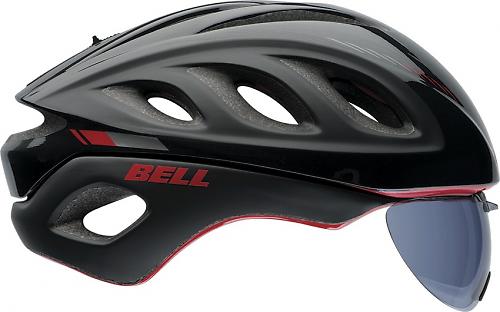- News
- Reviews
- Bikes
- Accessories
- Accessories - misc
- Computer mounts
- Bags
- Bar ends
- Bike bags & cases
- Bottle cages
- Bottles
- Cameras
- Car racks
- Child seats
- Computers
- Glasses
- GPS units
- Helmets
- Lights - front
- Lights - rear
- Lights - sets
- Locks
- Mirrors
- Mudguards
- Racks
- Pumps & CO2 inflators
- Puncture kits
- Reflectives
- Smart watches
- Stands and racks
- Trailers
- Clothing
- Components
- Bar tape & grips
- Bottom brackets
- Brake & gear cables
- Brake & STI levers
- Brake pads & spares
- Brakes
- Cassettes & freewheels
- Chains
- Chainsets & chainrings
- Derailleurs - front
- Derailleurs - rear
- Forks
- Gear levers & shifters
- Groupsets
- Handlebars & extensions
- Headsets
- Hubs
- Inner tubes
- Pedals
- Quick releases & skewers
- Saddles
- Seatposts
- Stems
- Wheels
- Tyres
- Health, fitness and nutrition
- Tools and workshop
- Miscellaneous
- Cross country mountain bikes
- Tubeless valves
- Buyers Guides
- Features
- Forum
- Recommends
- Podcast
TECH NEWS
Bell launch ‘fastest’ aero helmet: Star Pro + video
Bell have launched a new helmet called the Star Pro which they claim to be the fastest aero road helmet on the market. It comes with vents that you can close on the fly with a simple slider, and the option of a magnetic eye shield.

Bell say that the Star Pro is the “first-ever dual-purpose helmet that provides the rider complete authority in maximising both aerodynamic speed and ventilating comfort for the road category.”

If you've been watching the Tour de France over the past couple of days – and you have – you might have already seen the Star Pro being worn by Team Belkin.

One of the Star Pro’s key features is what Bell call its Active-Aero Technology (which you can see a bit more clearly on this clear-shelled version of the helmet that Bell have constructed to show how it works). This is the slider mechanism on the back of the shell that allows you to open and close the vents. The idea is that you can open them when you’re after ventilation, and close them when you want to minimise aerodynamic drag.

“A full range of competing aero helmets were tested at the Faster wind tunnel facility [in Scottsdale, Arizona, USA] utilising the industry-adopted wind-averaged drag (WAD), a wind velocity of 25mph (40kph), and a 30° head angle for all helmets,” say Bell. “Tests proved that the Star Pro, with vents closed, is the fastest helmet on the market when compared to other very well-known aero competitors.”
The “well-known aero competitors” they refer to include the Giro Air Attack and the Specialized Evade.
In terms of ventilation, Bell say that the Star Pro is nearly as impressive.

“When measuring the Star Pro’s cooling efficiency, with vents open, it proved to be near equal to a traditional road helmet over a 30-minute period, but more importantly, cooled faster than a bare head during the initial five-minute period giving the cyclist the ability to cool their head mid-ride,” say Bell.

“Our intention with Star Pro was to eliminate the either/or choice cyclists have long been faced with when it comes to being faster or cooler,” says Bell Helmets’ Azul Couzens. “We’ve already seen it perform well with the United Healthcare Pro Cycling Women’s Team domestically and look forward to watching Team Belkin wear this throughout the 2014 Tour de France.”

Star Pro also features what Bell call Overbrow Ventilation which is a system that is designed to draw air into the intake ports and circulate it through a network of air channels that push out warm air through the exhaust ports. It comes with a new Float Fit System that is designed to accommodate the vast majority of head shapes comfortably.

You can buy the Star Pro either with or without a Magnetic Zeiss Shield. This is an eye shield that you can remove and store easily on the helmet exterior when not in use.
The Star Pro will be available in three sizes and will be available in six colorways, including two high-visibility options – Infrared and Retina Sear. Star Pro is priced fat £169 (£199 with shield) and will be available later this year.
Mat has been in cycling media since 1996, on titles including BikeRadar, Total Bike, Total Mountain Bike, What Mountain Bike and Mountain Biking UK, and he has been editor of 220 Triathlon and Cycling Plus. Mat has been road.cc technical editor for over a decade, testing bikes, fettling the latest kit, and trying out the most up-to-the-minute clothing. He has won his category in Ironman UK 70.3 and finished on the podium in both marathons he has run. Mat is a Cambridge graduate who did a post-grad in magazine journalism, and he is a winner of the Cycling Media Award for Specialist Online Writer. Now over 50, he's riding road and gravel bikes most days for fun and fitness rather than training for competitions.
Latest Comments
- Steve K 1 sec ago
Funnily enough, I've just been having an argument on the other website I waste time on with someone who is pretty much suggesting that.
- the little onion 41 min 39 sec ago
DO IT FOR YOOOOOOOORKSHIIIIIRE
- stonojnr 1 hour 22 min ago
but does that reflect a less preponderance of cameras in Norfolk/Suffolk (who are effectively just one force not two when it comes to road policing...
- chrisonabike 1 hour 42 min ago
After a day getting others to run on the treadmill ... TBF some folks who lead classes are pretty active in them. And maybe she has to carry a bit...
- chrisonabike 3 hours 10 min ago
Shurely you stop at "you'd be liable". I haven't checked the details yet but surely cameras and witnesses only come in if there is a dispute? If...
- NoOneSpecial 3 hours 14 min ago
Shimano Tourney rear mech has an oversized lower pulley and it's red!...
- Secret_squirrel 4 hours 24 min ago
Extraordinary claims require extraordinary evidence. ... do share.
- Hirsute 5 hours 43 min ago
NOTHING can destroy a Cyber Truck*….😎😏 #WorldBollardAssociation *swasticar
- Secret_squirrel 6 hours 9 min ago
How can these be better than water shoes in the wet? The clue is in the name. Water shoes will handle the wet better, have a thicker sole and dry...
- chrisonabike 6 hours 31 min ago
Can't recommend - my shirts have now discoloured and I seem to attract the wrong sort of DIY mechanic.





















Add new comment
8 comments
That said they do have a rule that says arms must be covered...
Well I just recently arrived at the start line in a local club ten TT having left my (non aero) helmet plus goggles in the car boot. At seventy six I blame onset of short term memory loss, however I went 29 seconds quicker on a windier evening than the previous week. My moderate time was impressive only to me as I pondered the marginal gains of riding with a bald head versus helmet, wearing a helmet is not something I do as a general rule, but do so in TT's to placate the pro helmet brigade.
FJM1002: The human head seems pretty aerodynamic to me in shape. At least, not significantly worse than road helmets. It's hard to find studies comparing helmets to headforms (most are helmets against helmets). Apparently Kyle Chester did research on this, but I can't find relevant ones online. Sheldon Brown's site has a report on his results though:
http://www.sheldonbrown.com/rinard/aero/aerodynamics.htm
A pure aerodynamics (i.e. pre-helmet-rules, no need to care about padding, very thin) TT helmet gives a 2% improvement over a bald headform. An ANSI approved TT helmet (old Bell Stratos) *increases* the aerodynamic drag by 1.3%, compared to a bald head. This means the human head (bald at least) lies somewhere between an ultra-thin, pre-helmet-rule TT helmet and a post-rule TT helmet. This means the (bald) human head is actually pretty damn aerodynamic.
The problem is the drag equation, the force of the drag F = ½.ρ.v².Cd.A. The padding and foam required to meet crash tests increases A - by a lot. For a road helmet, my back of the envelope calculations suggest upwards of 20%. So, just to break even, the helmet needs to *reduce* the Cd by proportionally the same amount - by 16% (i.e. by 1/1.2). That's a big ask.
Now, hair is very unaerodynamic, and according to the report on Kyle Chester's results, the ANSI approved TT helmet has less drag than a head with hair. However, like I said, that's what a cycling cap is for. Next, road helmets are always going to be worse than pure TT helmets. Even aero road helmets. It's just an inescapable fact of the need to vent heat.
So to summarise:
- It seems the (bald) human head compares quite favourably to TT helmets, even the now "illegal" 'pure' aero helmets. Though, also, there's not much data out there.
- Hair is unaero. A decently fitting cap should fix that and get you most of the way back to the aero performance of a bald head, I would contend. The cycling cap also costs just £3, rather than £200+.
- Venting in helmets is unaero (lots of helmet to helmet comparison studies out there showing this), however for any helmet you'd want to wear for longer than a TT, you tend to want venting..
midschool: I didn't comment on safety aspects, only on aero performance. Note that the manufacturer in this article isn't marketing this helmet for its safety, only on aero performance. Indeed, it's a rare helmet manufacturer who makes any strong claims about safety (ever wonder why?).
+1.
The human head is very aero.
What these people forget is that the purpose of a helmet is #1 - safety. #2 can either be comfort OR aerodynamics.
Slope backed helmets can be used for aerodynamics, but don't expect much comfort. If you want a helmet that can breathe, don't expect much aerodynamics.
And the idea that having a vent that closes or opens is likely to see such stupid behavior as "leaving the vents open on the long flats and closing the vents on the steep climbs". The primary benefit of aerodynamics is on the long haul. Let's see if the use reflects that.
A cycling cap is even more aero, at a tiny fraction of the cost. Plus it helps wick sweat out to the moving air where it evaporates faster, and helps keep sweat out of your eyes.
Cycling caps: Cheap watts.
You do realise this is a helmet right? not a hat? Just want to make sure in case you are heading out every day in a cap hoping its going to extent your life expectancy.
Good to see Bell getting back into the high end road helmet game. Pricing looks sensible as well (And yes I know Aldi brand helmets cost less).
The human head is in fact not very aerodynamic. A cap won't change how aero you are. But a helmet designed to do so can
The human head is in fact not very aerodynamic. A cap won't change how aero you are. But a helmet designed to do so can